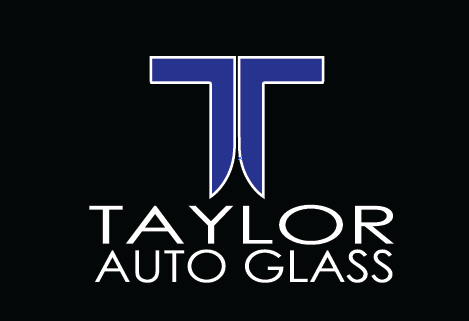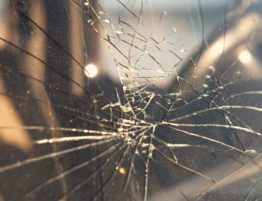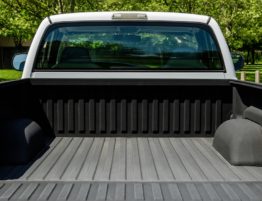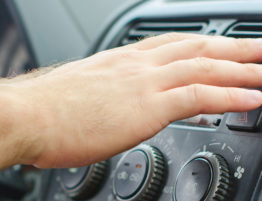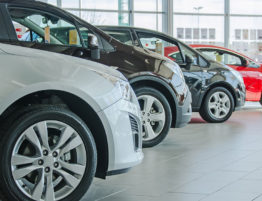
In any vehicle there are many types of glass and mirrors. Whether it is your windshield, back window, side or wing mirrors, windows, and rear view mirror, there are all sorts of glass features that are developed to help us obtain optimum visibility and safety when driving. Most of us don’t even notice that there’s a difference in the glass between the different components but there are.
Today we’re discussing the different types of auto glass that keep you safe in your vehicle!
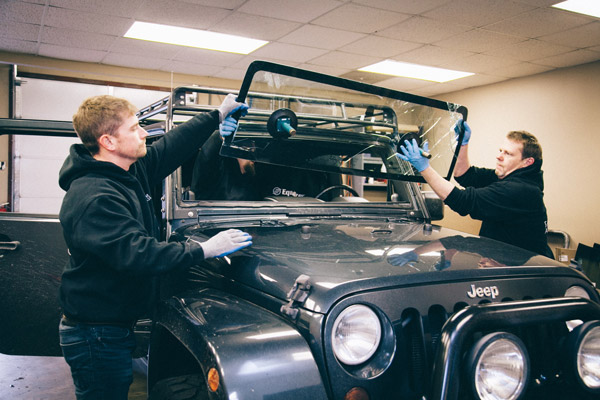
Windshield and Rear Window – Laminated Auto Glass
Windshields are designed to not shatter under impact, therefore they are constructed with a different glass than a normal window in a typical home.
The glass used in windshield construction is what auto repairmen call laminated glass and was designed in the 1920s. Laminated glass is essentially two sheets of glass put together and sealed under extreme heat with a PVB (polyvinyl butyral) between them. This heating and sealing creates the sort of safety net which defines laminated glass. You can read more about how a windshield is made here. Between the layers in the glass and the heating method, it prevents your windshield from shattering into harmful shards. And if a passenger is thrown into the windshield, it works to absorb the impact and lessen the force on the person. Laminated glass is also used to construct your vehicle’s rear windows. It can be repaired easily if it has a chip or crack.
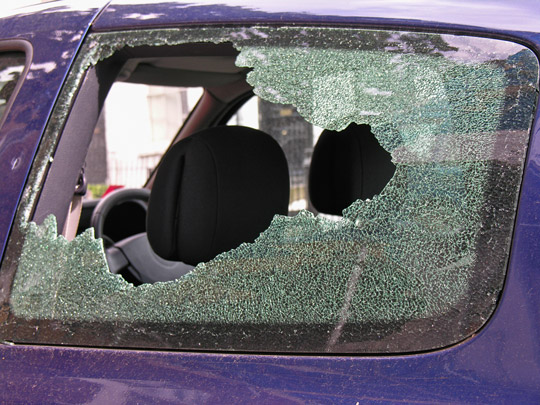
Side Windows – Tempered Auto Glass
Side windows are made from tempered glass. Tempered auto glass is formed by a single-ply sheet of glass, but it is heated and then rapidly cooled. Tempered glass prevents your side windows from breaking into sharp pieces when they shatter. Since side windows are not as prone to impact breakage, tempered glass is used instead of laminated glass. In the event of tempered glass shattering, the pieces of glass become rounded and unsharp (as you can see in the image above), causing minimum harm to the passenger. If there is a chip or crack in tempered glass, the entire pane of glass will have to be replaced because it’s a single sheet and the nature of its composition.
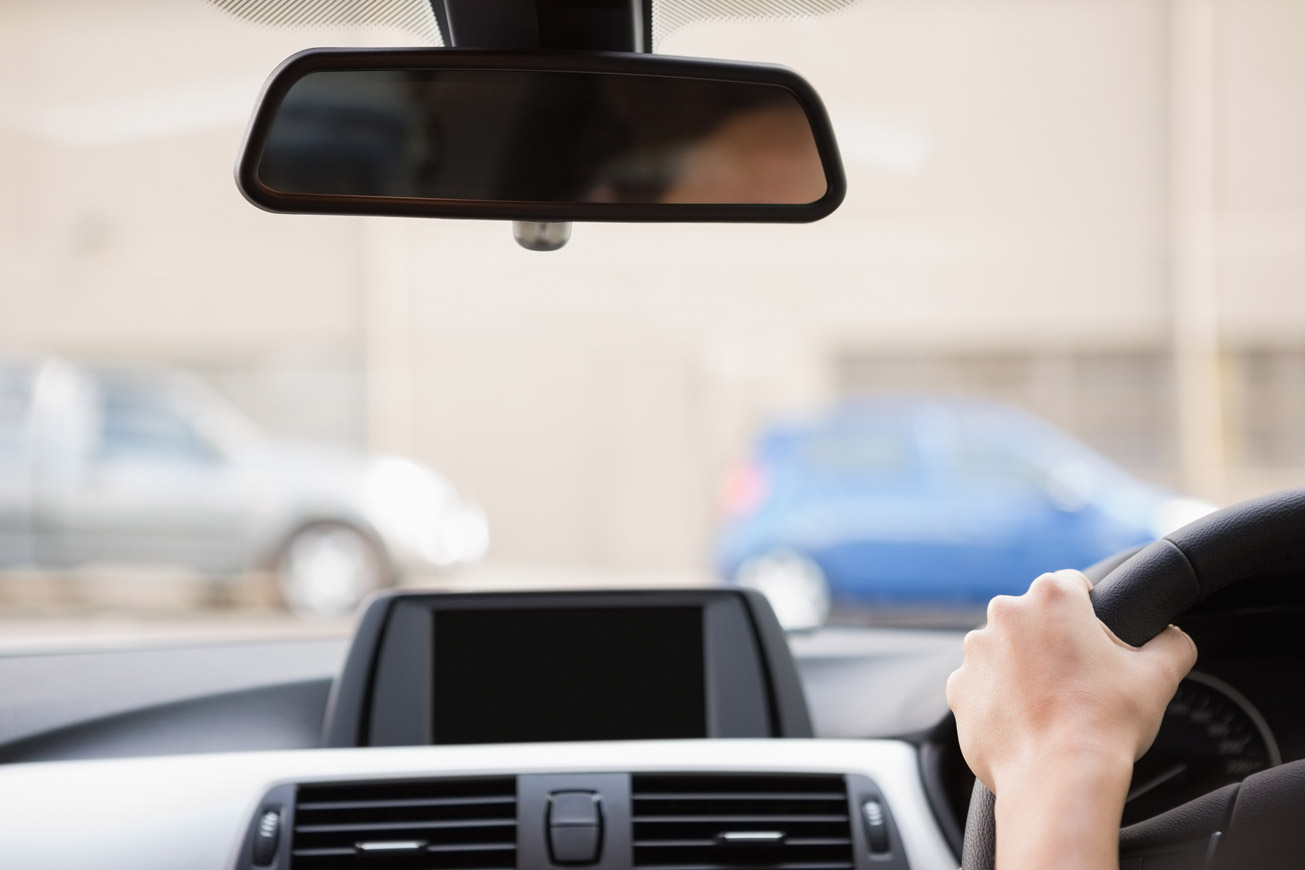
Rear View Mirror – Flat, Convex
We are all familiar with the rear view mirror in our car and occasionally it becomes our best friend when driving. These mirrors are made of two reflective surfaces: one typical rectangular mirror, and right in front of the regular mirror, a small wedge that only reflects 4% of the light coming in.
The purpose of the dual reflection composition is to enable the proper brightness for maximum visibility when driving during the day or night. While driving at night, it’s usually best to flip the mirror. This will dim the glare and allow you to still be able to view the road behind you with your mirror.
Side Mirrors – Convex, Blind Spot, Flat, Blue Mirror, Heated
There are five different ways that side (or wing) mirrors can be constructed. All are made from typical mirror glass and are capable of shattering and cracking.
Note: Always make sure to repair any kind of damage to your side mirrors since they are critical to you being the safest driver. You can also learn more about protecting your side mirrors here.
Your vehicle’s side mirrors could be:
-
Convex Mirrors
Convex mirrors are a typical side mirror for the passenger side of the car, that usually has the warning “Objects in mirror are closer than they appear.” This is because a convex mirror is curved and distorts the image in the mirror in order to obtain maximum visibility.
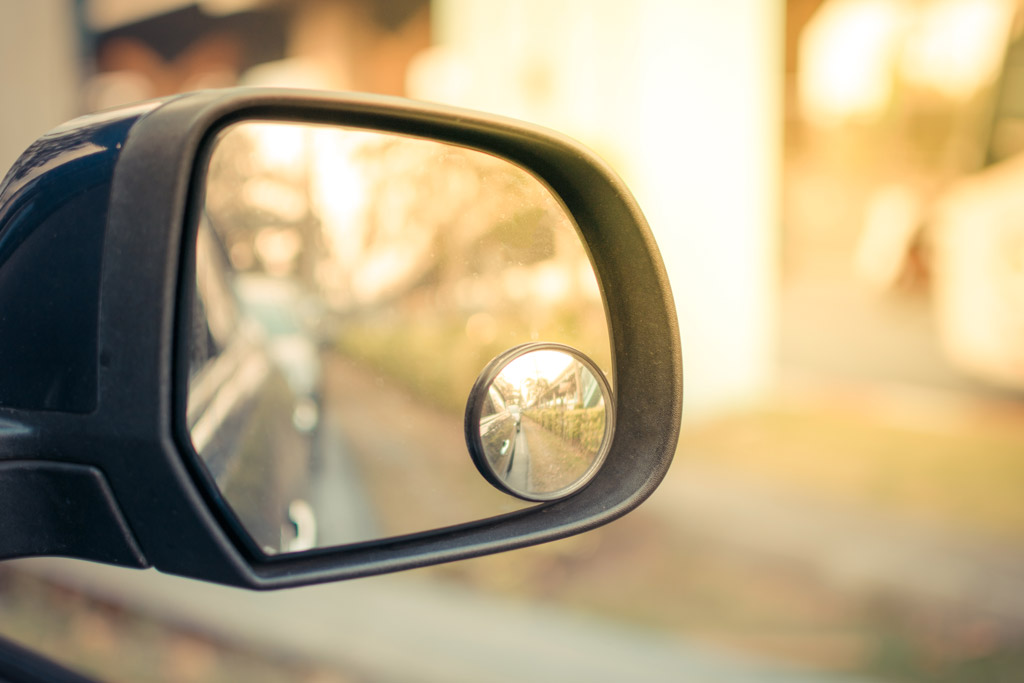
-
Blind Spot Mirrors
This is a typical convex side mirror that contains a vertical line and an additional curved mirror at the very edge that covers the blind spot. (It can also be modeled as a convex mirror with a circular curved mirror at the bottom outside corner as displayed above). Most of the time, drivers must look over their shoulder to view their blind spot before making maneuvers, but with the blind spot mirror, this is covered by the additional curvature in the outside mirror.
-
Flat Mirrors
This type of mirror is usually used on the driver’s side of the car so they can view the road around them and behind them as realistically as possible. Flat mirrors do not distort the image in the mirror, so objects in the mirror are represented in their actual locations and size. The downside to these types of mirrors – they do not contain the same amount of visibility of the road that convex mirrors do and some objects could be out of view of the mirror.
-
Blue Mirrors
Blue mirrors are constructed with blue tinted mirrors / auto glass that eliminates the brightness of headlights and other light sources at night. These mirrors are helpful for obtaining the best visibility while driving at night.
-
Heated Mirrors
This is a type side mirror that has a built in heating system for defrosting and defogging the mirror. It is helpful in times that would typically cause low visibility.
Now you know everything you need to about the auto glass components of your vehicle! If you have any problems or damage with any of the auto glass on your vehicle, Taylor Auto Glass is ready to help. And even though we’re located in Greensboro, we are a mobile auto glass company, capable of traveling to High Point, Winston Salem, and Kernersville to help!
- Driving with a Cracked Windshield is Dangerous! - November 28, 2019
- Common Causes of Windshield Cracks: What You Need to Know - November 20, 2019
- The Best Road Trip Snacks for Kids - November 20, 2019
